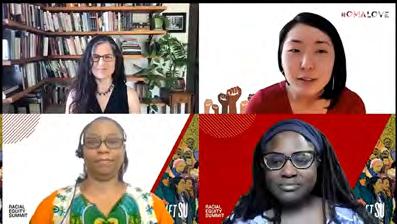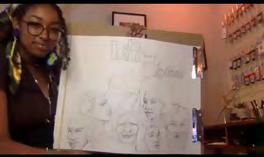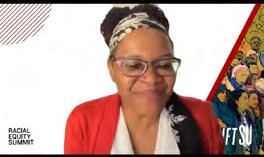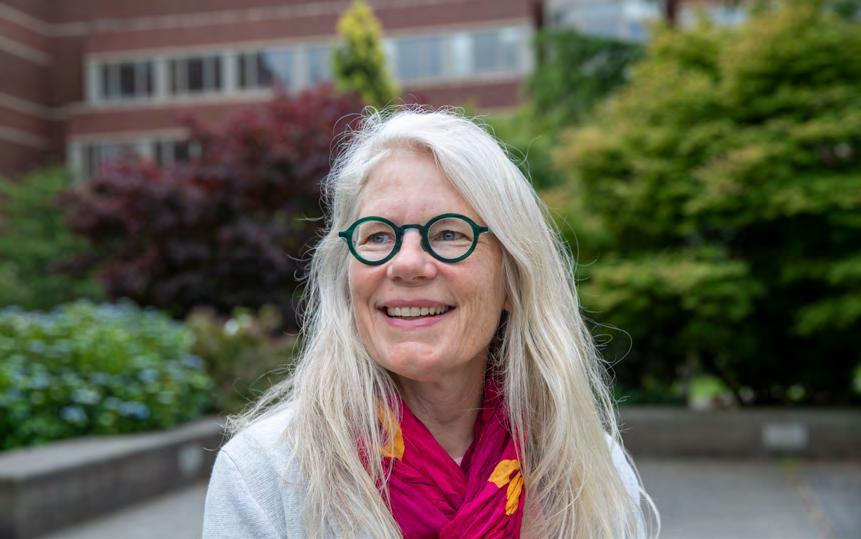
19 minute read
on campus
CONNECTING TO THE WORLD VIRTUALLY
Central America Initiative continues its global engagement work despite pandemic
Advertisement
By Tina Potterf
Associate Professor Serena Cosgrove, PhD, ’85, is the faculty coordinator of the Central America Initiative.
Photo by Yosef Chaim Kalinko
Amid the twin crises of a raging pandemic and social unrest at home and abroad, Seattle University and its partner institutions that make up the Central America Initiative were able to continue the engagement and learning that has been the cornerstone of the program.
What began in 2014 as the Nicaragua Initiative—formed as a partnership between Seattle University and the Universidad Centroamericana (UCA) in Managua, Nicaragua—has expanded to include Universidad Centroamericana “José Simeón Cañas” (UCA) in El Salvador and Universidad Rafael Landívar in Guatemala.
Under the leadership of Associate Professor Serena Cosgrove, PhD, ’85, who is the faculty coordinator of the Central America Initiative, the initiative’s partner schools engage in outreach, programming and research throughout Nicaragua, including the isolated Caribbean Coast, and in Guatemala and El Salvador.
This collaboration and experiential learning model, which in pre-pandemic times included Seattle U students and their international counterparts conducting research and attending classes in-person, has continued to thrive even as shared activities became virtual ones, exemplifying the global engagement that is integral to Seattle U’s mission. Virtual collaborations have included scholarly projects, webinars and sharing classrooms—in this case, using the COIL method— during the pandemic. COIL (Collaborative Online International Learning) involves paired faculty from each university designing and implementing programming for their students and from there students from the different universities form teams to work on projects together.
“With COVID we had to pivot. But we are still doing a lot of things together,” says Cosgrove. “Thank goodness that between Seattle U and our three partners, the relationships are strong enough and deep enough that we were able to pivot from faceto-face interaction to virtual collaboration.”
Currently, five students from UCA-Managua are taking classes, virtually, at Seattle U. While they remain UCA students, their classes at Seattle U contribute directly to their majors. Students are taking classes in the College of Arts and Sciences, the College of Science and Engineering and the Albers School of Business and Economics.
Another example of thriving during challenging times is the Central America Initiative’s partnership with St. Joseph’s Parish in Seattle, the UCA in El Salvador and the parish of San Bartolomé in rural El Salvador. Together they are working with youth entrepreneurs to create sustainable livelihoods for themselves. The Sustainable Livelihoods Initiative is “a program where we work with young entrepreneurs by providing training and seed money,” says Cosgrove. “It’s about how to create opportunities for young people so they don’t have to leave their community.”
As someone who has been at the fore of many of the developments and expansion of the global outreach that has evolved into the Central America Initiative, Cosgrove joined colleagues in co-authoring a book about their work on the ground in Nicaragua.
—SERENA COSGROVE, PHD, ’85, associate professor/faculty coordinator, Central America Initiative
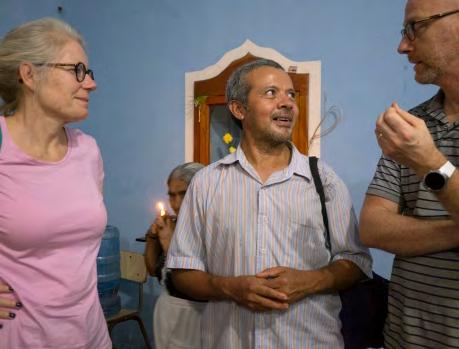
A beneficiary of Sustainable Livelihoods, José Mejía runs a business raising chickens to support their community soccer team. Serena Cosgrove, Ramón Franco, who works for the local parish in Arcatao, El Salvador, and Daniel Stoner from Seattle’s St. Joseph Church talk about the Sustainable Livelihoods Initiative.
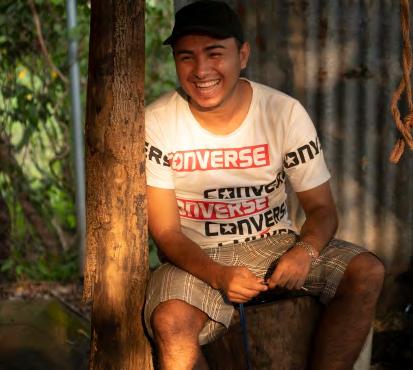
In Surviving the Americas: Garifuna Persistence from Nicaragua to New York City, written by Cosgrove, José Idiáquez, Leonard Joseph Bent, and alum Andrew Gorvetzian, ’15, the focus is on what it means to be Garifuna today, particularly in Nicaragua. The Garifuna are descendants of an Afro-indigenous population who were exiled to the Honduran coast in the 18th century and ultimately migrated along the Caribbean coast of Central America and beyond. All proceeds from the book, which Cosgrove hopes will inspire readers to open their minds and perspectives to other parts and people of the world, will benefit the Garifuna communities of Nicaragua.
“For your average reader, understanding the history and practices of local groups in Central America can help folks understand more about Central Americans who choose to come to the United States,” she says. “These are folks who don’t want to leave their communities and never come back. You may look at the issues of immigration a little differently.”
A second book, University Under Fire, will be out early next year and includes the work of UCA Nicaragua President Chepe Idiaquez, S.J.—“Father Chepe”—and addresses how the ongoing political crisis in Nicaragua is affecting the university in Managua. Due to its criticism of the Nicaraguan government, the university and its leaders have been targeted with funding cuts, police harassment, even death threats.
The Central America Initiative provides inspiration for the Seattle U community to partner with other Jesuit universities around the globe and to help prepare students to be true citizens of the world, says Joe Orlando, Special Assistant to the Provost for Strategic Initiatives.
For many years, Orlando has been actively involved in global engagement issues and initiatives at Seattle U and, working alongside Cosgrove, was instrumental in what became the Central America Initiative. The initiative’s roots were planted with Seattle U’s Nicaragua immersions—first with students traveling to the country and expanded to include faculty, staff, administrators and cabinet members—that were organized and led by Orlando.
“What this initiative represents is an example of the range of things we can do in many parts of the world with other Jesuit schools,” he says. “[The work] is mission-congruent. … We want to have all kinds of partnerships that connect the university with the world.”
It is this connection to the world at large that Orlando experienced firsthand studying abroad when he was an undergraduate student. “My experience with study abroad fundamentally opened me up to the global community. I really came to understand that for us as a country, and especially for those of us in higher education, if we are going to prepare citizens of the world, we have to be truly engaged with the world ourselves. It shifted the way I see my personal place and our communal place globally.”
Through the work of the Central America Initiative, students and faculty alike are doing research that is responsive to local needs of the countries and communities where they are located. “One of the things I find compelling is what does it mean to do research that contributes to the empowerment of the local communities we are working with,” says Cosgrove. “The profound reward of seeing so many of my students and colleagues engaging deeply with Central America is our little way of making a difference.”
POWERING COMMUNITY
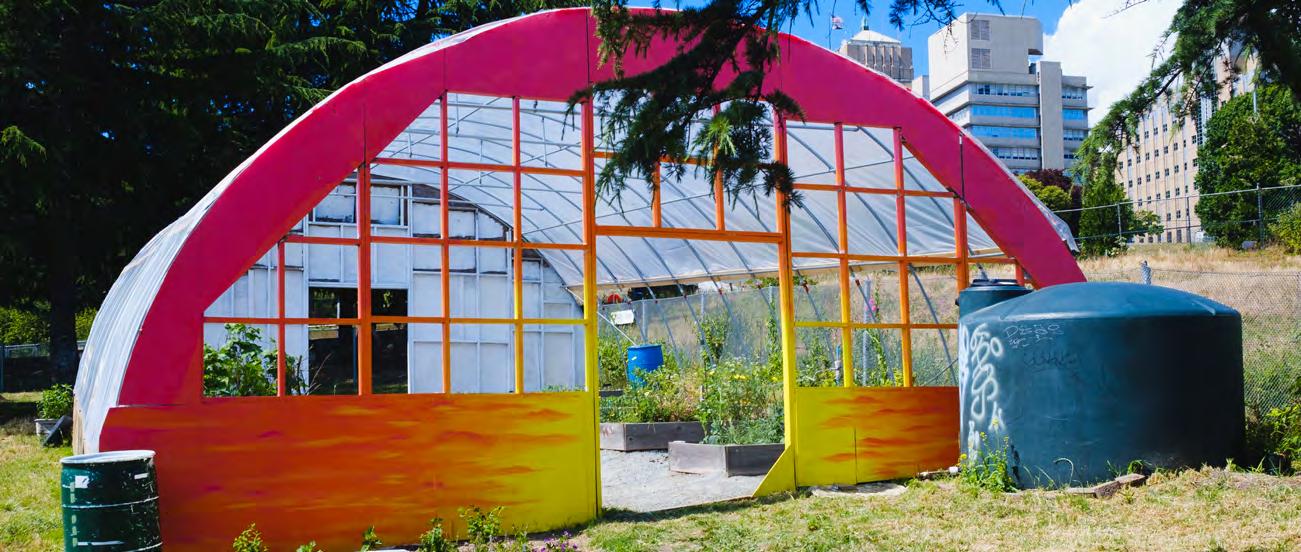
Engineering students help bring solar-driven electricity to urban garden
By Dean Forbes
ian paulo santiago, ’21 christiana tembo, ’21 kc nabin, ’21
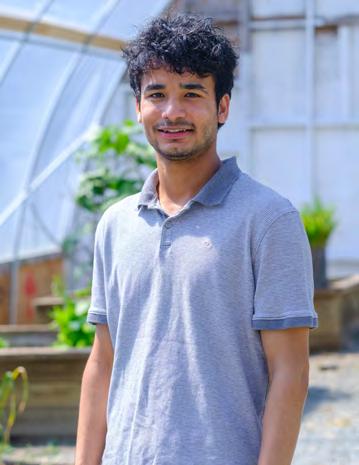
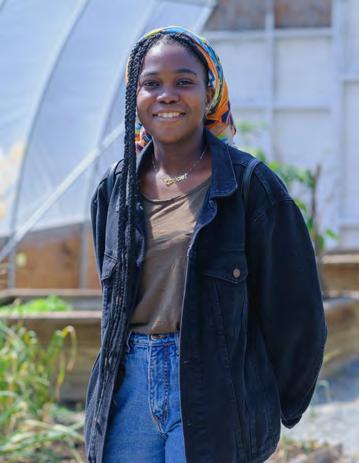
yen tran, ’21
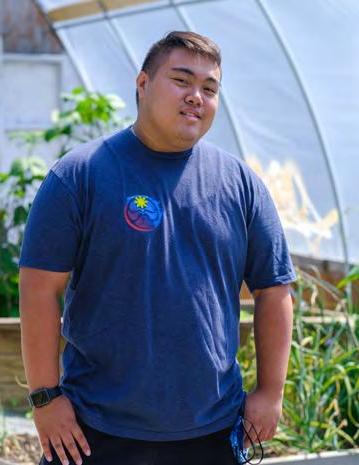
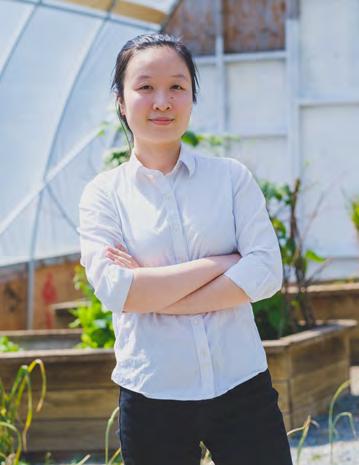
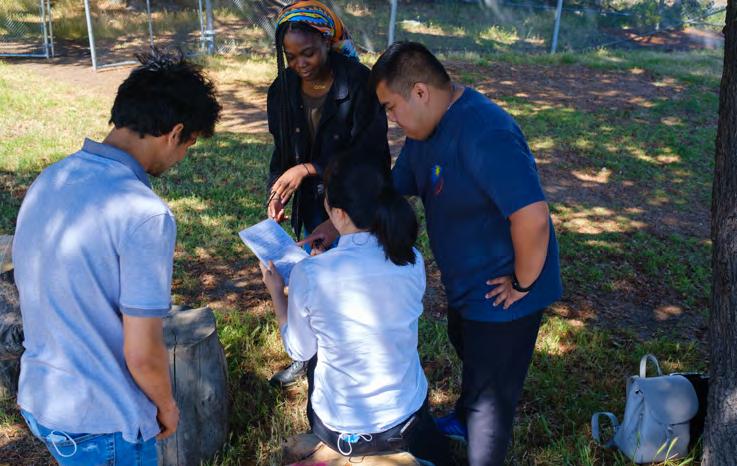
Seattle University electrical engineering student Christiana Tembo, ’21, grew up in the small village of Muanda in the Democratic Republic of Congo. She knows firsthand what it means to not have a sufficient source of electricity to power everyday necessities. And she knows how it can spark a sense of joy even in simple ways.
“I remember one day, one of my neighbors bought a backup generator so we could watch a soccer tournament. People were very excited as the national soccer team scored a goal. As a 5-year-old girl, I naively thought that electricity was ‘the thing that made people happy.’ As a result, I wanted to generate electricity to all the houses in my village,” she says.
Tembo is part of a four-person team of senior electrical engineering students who created a proposal and executed the work to design a solar-powered energy project to provide electricity for a community garden greenhouse. It was a natural choice for the students, three of whom come from developing countries where consistent and widespread electricity remains a challenge.
The students completed the work, which benefits the Black Farmers Collective in Seattle, as their senior capstone project and it was one of the year’s projects undertaken through the College of Science and Engineering’s Project Center. Black Farmers Collective operates a two-acre urban farm near campus at Yesler Terrace, including the “Yes Farm” where Yesler Terrace residents have an opportunity to grow their own food and build community with one another.
“I have always wanted to learn about renewable sources and electricity generation itself since I am from a country, Nepal, where there are renewable sources but not enough electricity,” says KC Nabin, ’21. “I have always enjoyed the innerworkings of the electrical components and power generation. When I got to work on this project, I was really excited and this project has helped me gain experience of electricity generation and design of the electrical system.”
Yen Tran, ’21, grew up in a small town in Vietnam. “My tropical country is gratefully ‘hugged’ by sunlight most of the time,” says Yen. “The first glance of the project got me thinking about using solar energy as a main source because of its convenience, meaningfulness and economic benefits.”
Even though solar energy has developed significantly in Vietnam, her town still lacks enough electricity. “I hope to apply what I have learned in this industry to my country so that we can get the most benefit out of this existent wonderful energy source. This project also benefits the Black Farmers Collective and people involved in Yes Farm, which makes it even a greater opportunity to contribute to the community.”
Ian Paulo Santiago, ’21, who has always had an interest in renewable energy and reducing the carbon footprint, says “when I saw the project description was to develop an off-grid power system for an organization that assists the BIPOC (Black, Indigenous and people of color) community of Seattle, I knew that this would be a project that would make a difference in my local community. Often times with electrical engineering, people think about making the next iPhone or the newest AI technology. Although all that is cool, I would prefer to do engineering work that I know will benefit the community and I think this project has allowed me to do just that.”
The students said they faced some challenges for this project: A $15,000 budget, the need to design the system to affix the solar panels atop a nearby shipping container, researching electrical codes and considering how future planned construction would impact how much shade could be thrown over the site.
“We all know shading is one the most important factors in solar industry, but the difficulty we were facing here was up to the next level,” says Santiago. “We needed to deal with the not-yet-existing buildings for shading analysis. However, those difficulties brought us together to overcome disadvantages and have success. It’s been an honor working with (Black Farmers Collective Managing Director) Ray Williams and the rest of the Black Farmers Collective and we can’t wait to see our design come to life.”
The Black Farmers Collective was founded five years ago as a nonprofit with a mission to support BIPOC farmers. It is a distributed network of farmers and growers throughout the greater Seattle area. The Yes Farm was its first urban farm; it also leases a farm in Redmond.
Says Williams, “It’s been great. It’s a great group of students. They’re thorough in asking their questions. They seem very motivated. I’m encouraged to see the diversity of engineers coming out of Seattle University.”
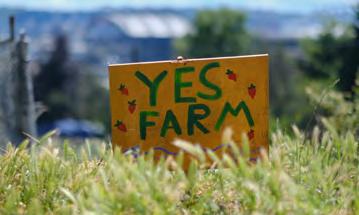
to do just that.” —Ian Paulo Santiago, ’21
Boost for Undergraduate Research
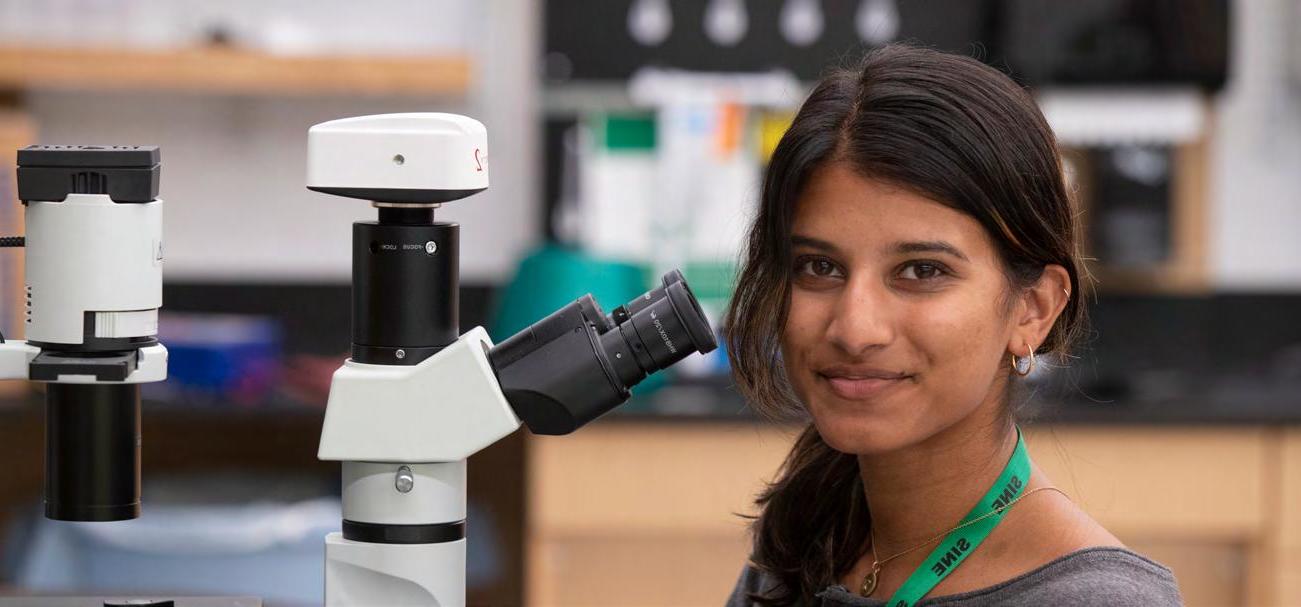
New summer fellowship builds on SU’s strong STEM education
By Tina Potterf
Shefali Menezes, ’22
Shefali Menezes, ’22, conducts research with Associate Professor of Biology and faculty mentor Carolyn Stenbak, PhD.
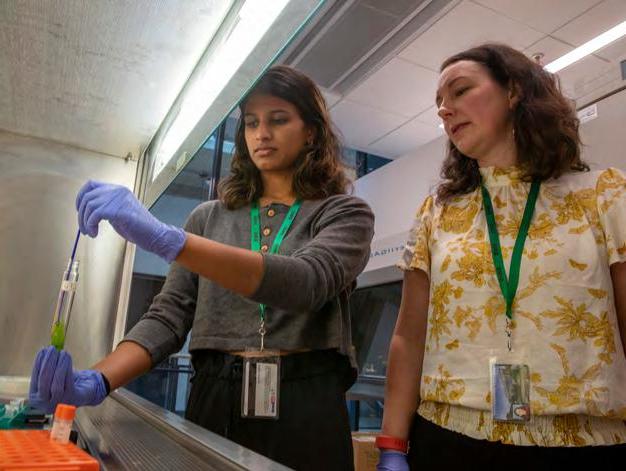
It was 5 o’clock in the morning when Shefali Menezes, ’22, got news about how she was going to spend her summer. See, Menezes got word that early morning while in Hawaii on an academic field study program that she was the inaugural recipient of the Peter L. and Patricia A. Lee Fellowship for Excellence in Student Research.
“I wanted to jump up and tell everyone. I remember being in disbelief and having to read over the email several times,” she explains. “I could not stop smiling and I had this feeling of ‘I did that.’”
Peter L. Lee, PhD, the namesake of this new research fellowship, is a distinguished alum of Seattle U who has been an influential figure on the global stage. Lee received his undergraduate degree in chemistry in 1964. With this fellowship he also honors his late wife, Patricia Lee (Coleman), who graduated from Seattle U in 1965.
As part of the fellowship, recipients must be juniors—majoring in one of the sciences—who seek to pursue advance studies in STEM disciplines, including entering a PhD program. The fellows like Menezes receive a summer of financial support to conduct their research.
For Menezes, the focus of her research is, “Exploring Microscopic Green Algae Diversity in Local Lakes,” which relates to algal and viral diversity. The project, which commenced in mid-June and continued into early September, took place both in the field—pulling water samples from local freshwater areas—and inside a lab in the new Jim and Janet Sinegal Center for Science and Innovation. It was one of the first research projects in the Sinegal Center before its official opening this fall.
The goal of the research, says Menezes, is to create a foundation for future research on viral algae diversity with both traditional and modern approaches. Here’s how Menezes explains it:
“Green algae are an important part of marine communities because they uptake carbon dioxide and release oxygen. There are estimated to be up to a million species. The goal of this project is to explore this algal diversity in freshwater habitats in the Puget Sound area. Biodiversity is essential for ecosystem health as well as resiliency. Using genetic techniques, we will be able to describe known and unknown algal species. This could potentially be used as a library to aid future experiments that relate to how viruses affect the algal species.”
Menezes, who is majoring in marine and conservation biology, worked with Associate Professor of Biology and faculty mentor Carolyn Stenbak, PhD. This research project was a continuation of Professor Stenbak’s earlier work that
The Lee fellowship is an important addition to existing undergraduate research opportunities within the College of Science and Engineering, says Stenbak.
“Through this fellowship, we can ensure that highly qualified and motivated students have the opportunity to do meaningful research projects during their last summer at SU. Research has shown that these kinds of experiences, particularly when they involve working side-by-side with a mentor, are critical for admission to graduate programs in the
sciences,” Stenbak says. “By dedicating support for a student whose goal is graduate school, the Lee fellowship highlights the importance of research experiences for these students and positions them for future success.”
Previously, Menezes has conducted research at the National Oceanic and Atmospheric Administration. Post-Seattle U, Menezes plans continued field work and graduate school, with the long-term goal “Since I am interested in conservation and sustainable ecosystems, I would like to be able to carry out research pertaining to human involvement within natural ecosystems,” she says, “studying how to create a sustainable balance for human development, while still allowing space for organisms and biomes to flourish.”
Menezes says this fellowship will only bolster her educational and professional aspirations. “It will help me get experience and deep dive into this project. Graduate schools look for meaningful research experience and receiving this fellowship may open many doors for me by providing credibility to my research.”
As a graduate of the College of Science and Engineering, Dr. Lee knows of the importance of opportunities and experiential learning, aspects of his undergrad years at Seattle U.
“I studied chemistry because I wanted to have a good general science education,” says Dr. Lee, who was initially eyeing a career in engineering.
Although he didn’t end up as an engineer following graduation, Dr. Lee put his chemistry degree to great use, first working as a quality control chemist with Darigold. Ultimately, his education and work in the field would prove beneficial on an international stage as he is credited as being instrumental in bringing iconic American brand Coca-Cola to China.
“Being a trailblazer, I wasn’t afraid of a challenge,” says Dr. Lee, who indeed was successful in the re-entry of CocaCola into China with the signing of an agreement in Beijing in December 1978. This marked the first major international company to re-enter the country.
The following year, Dr. Lee was named the first president of Coca-Cola China and then senior vice president of Coca-Cola Pacific in 1985. Following his time at the company, Lee went on to hold senior management positions with several multinational companies in telecommunications, performance chemicals, pigments and packaging industries until his retirement in 2007.
With all his professional and academic achievements, Dr. Lee has never forgotten his Seattle University roots. As one of the university’s earliest international students, he is also among our most actively engaged alums. A recipient of the University Service award in 2018, Dr. Lee made the lead contribution and secured the remaining funds for the Asian Studies Program and later established the Peter L. Lee Endowed Lectureship in East Asian Culture and Civilization in the College of Arts and Sciences.
His own experience doing undergraduate summer research prompted Dr. Lee to create this endowment. And, more importantly, he says, “my former wife Patricia, ’65, with whom I shared our lives for 21 years and raised two sons, passed away in November 2020 and … inspired this commitment to Seattle U.”
For Menezes, this fellowship is emblematic of how the College of Science and Engineering and its professors engage students in research with real-world application.
“I have been able to participate in multiple research projects with different professors as our professors want students to help them with their ongoing projects,” she says. “There are so many incredible opportunities for research at your fingertips, which may not be the case at larger institutions. I also feel that every professor has taken the time to get to know every individual student.”
Peter L. Lee, PhD, ’64
“Through this fellowship, we can ensure that highly qualified and motivated students have the opportunity to do meaningful research projects during their last summer at SU.” —carolyn stenback, associate professor & faculty mentor
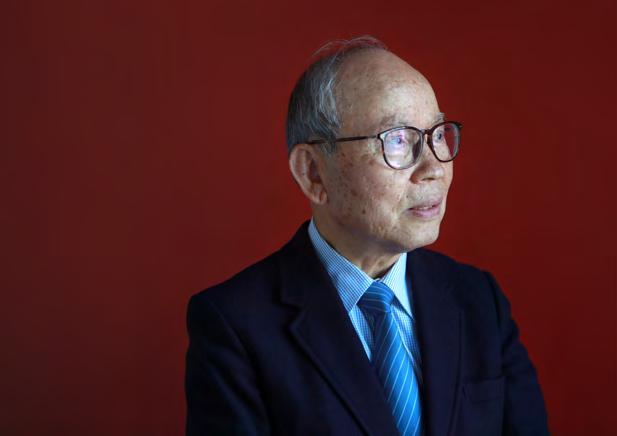
ACTIVATING AND COLLABORATING FOR CHANGE
Initiatives bolster inclusion and diversity work on campus
By Allison Nitch
Natasha Martin, JD, vice president for Diversity and Inclusion and associate professor of law, created and delivered the university’s Inclusive Excellence Action Plan for Racial Equity and Antiracism in 2020, laying the framework for Seattle University to continue advancing inclusive excellence and align antiracism to its strategic direction and purpose.
Known officially as LIFT SU, the plan incorporates the following principles:
Listen and learn
Impact through intentional action
Fail forward
Transform together
In the spirit of collaborative and creative problem solving, the campus community gathered virtually for Seattle U’s first Racial Equity Summit on May 18, 2021, a mission-aligned event led by the Office of Diversity and Inclusion (ODI) in partnership with the campus community.
This LIFT SU initiative aimed for participants to reflect on and deepen an understanding of systemic racism and build a collective capacity toward becoming a more diverse, equitable and inclusive university.
Aligning with the goals of LIFT SU, the event featured voices of the campus community, music, art, engagement, analysis and a conversation with keynote speaker Michelle Alexander, New York Times best-selling author of The New Jim Crow: Mass Incarceration in the Age of Colorblindness. Nearly 1,000 members of the campus community participated in the summit.
As stated on ODI’s site, the summit was imperative “given this consequential year, including the social movement for Black lives after the killings of Ahmaud Arbery, Breonna Taylor and George Floyd, alongside a pandemic that has had both disproportionate health and economic impacts on communities of color. [And given] a contentious election season, followed by a deadly insurrection on our nation’s capital and the elevated racial violence that continues against various communities of color, it is important to end this academic year with an opportunity to reflect upon the issue of systemic racism as we move to activate our campus around becoming an antiracist institution.”
“We bear witness to the widespread, shameful and devastating impacts of institutionalized racism across our country, our state and even our own campus,” says Vice President for Student Development Alvin Sturdivant, EdD. “The Racial Equity Summit is the start of what I hope will be an ongoing, sustainable community effort to advance racial equity, diversity and inclusion at Seattle University.”
Academic Assembly President Frank Shih, PhD, echoes the necessity of a collective effort to effect change. “The summit initiative is wholly embraced and supported by the Academic Assembly as there’s no better time than yesterday and no initiatives too small to pour water on the fire that is burning all around us.”
Learn more about LIFT SU.
Elements of the summit, including recommended prework materials assembled by ODI, are available here.
nearly 1,000 attend first virtual racial equity summit


Collective Learning and Engagement Keynote Conversation Q&A (clockwise from top left) Michelle Alexander, author, keynote speaker Ayman Hamid, ’21 Paolo Santos Alves, ’22 Deborah Ahrens, JD Allyship in Solidarity Panel (clockwise from top left) Rachael E. Luft, PhD Michelle Minjoe Kim-Beasley Colette Taylor, EdD Chris Van Liew LaKesha Kimbrough Art in Action (above) Natasha Martin, JD Ruth Zekariase, ’22
